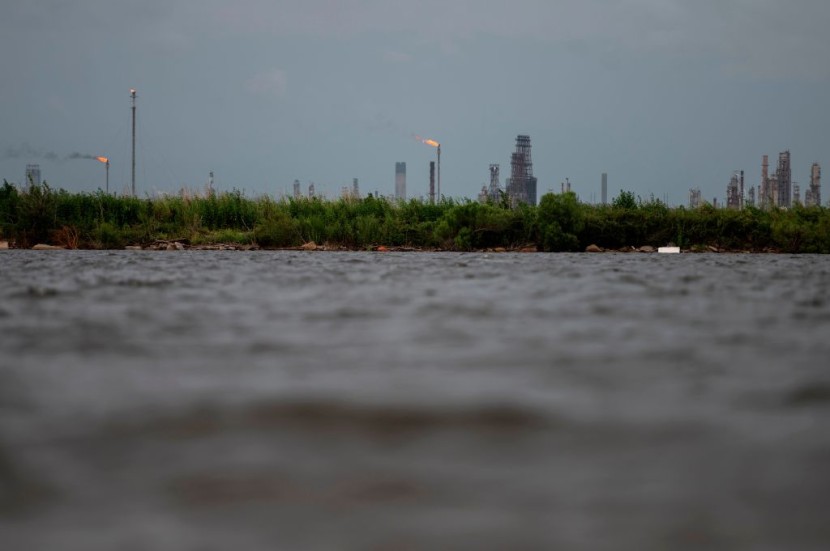The BP Deepwater Horizon catastrophe ravaged the Gulf Coast and resulted in the deaths of hundreds of thousands of marine species.
Nearly $3 billion in settlement funds from the disaster are currently supporting a significant ecosystem restoration in Plaquemines Parish in southeast Louisiana, as reported by The Associated Press.
The Mississippi River delta divides a flat, sparsely inhabited area that is marbled with bayous and bays. Along with industrial storage and oil rig supply ships, the area is home to farms, fishing camps, and shrimp boats.
And it's set to play host to a massive project designed to emulate Mother Nature: massive gates will soon be built into a levee for flood protection.
The Biggest Ecological Restoration Project in State History
In order to direct some of the river's sediment-filled water into the Barataria Basin southeast of New Orleans, a new channel is being created.
If it is successful, land that has been rapidly disappearing for decades will be gradually restored when the sediment settles out in the basin. Even though the receding coast is threatened by increasing sea levels brought on by climate change, state coastal officials see it as a groundbreaking initiative that they are confident will succeed.
It was the biggest ecological restoration project in state history, according to Governor John Bel Edwards. At the project's groundbreaking on Thursday, he stated, "Quite frankly, I'm not aware of one on this scale anywhere in the country, and there are few in the world that can match the size of this project."

In its approval of the project last year, the U.S. Army Corps of Engineers predicted that by 2070, up to 21 square miles (54 square kilometers) will be created. Sea level rise and subsidence, or the natural sinking of land, will significantly reduce the returns, making a net loss of land still likely. However, that could be viewed as a component heightening the significance of the effort.
According to coastal experts, material deposited as the mighty river repeatedly changed its own twisted, meandering path over thousands of years formed south Louisiana.
This is one of the primary causes of Louisiana's marshy coastal wetlands giving way to expanding areas of open water, raising a host of environmental issues. Among those worries is the loss of the ground that protects New Orleans from hurricanes naturally.
The Mississippi River's water channeling into the basin has negative effects on the ecology and the economy. The Corps acknowledged the environmental costs of transferring non-salty river water into coastal regions where aquatic animals thrive in salty or brackish water even as it issued permits for the project.
Bottlenose dolphins are likely to perish as a result of the alterations, while fish and sea turtles may also suffer in other ways. Because of the project's anticipated consequences on shrimp and oysters as well, fishermen have long opposed it.
Read also: Louisiana Passes Law Prohibiting Sex-Change Surgery on Youths
Opposition to the Diversion
Among those opposed to the diversion who support other coast-building techniques is Kerri Callais, a board member for the Save Louisiana Coalition, which opposes the diversion. These techniques include restoring barrier islands and using pipelines to pump sediment to land-depleted areas.
Despite official vows to take steps to lessen harm, the opposition has persisted. In order to assist fishermen and oyster harvesters who would need to relocate their operations or otherwise modify their methods as a result of the project, coastal officials on Tuesday provided an overview of the $10 million in anticipated investment on a number of initiatives.
More money, including the elevation of roads, is planned to assist towns near the river that may experience heightened flood threats as a result of the project.
Some environmental organizations see the possible advantages. The project, according to Matt Rota, senior policy director for the charity Healthy Gulf, will need less energy than sediment pumping, and he acknowledged the need to take advantage of the river's inherent capacity to create new land.
Yet, according to Rota, Healthy Gulf wants to see more action taken to assist residents whose livelihoods depend on fishing and oyster production. He claimed that in order to reduce pollution that flows south from upriver, state and federal administrations must work much harder.
Related article: Former Louisiana Firefighter Arrested for Fourth Time for Sexual Assault Crimes Against Animal and Person with Disability








